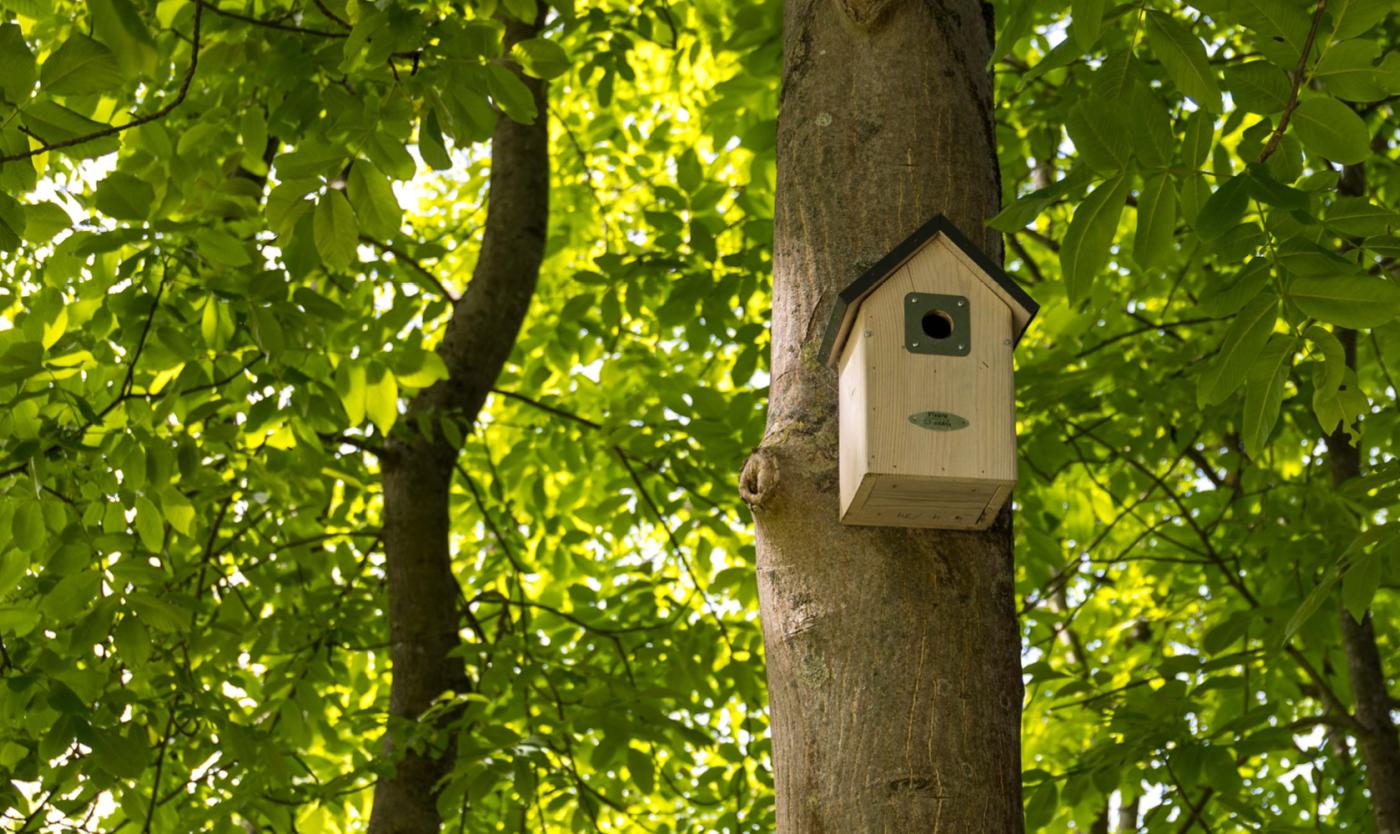Bird houses for the tits
We have installed hanging nesting boxes that act as artificial tree hollows. The size of the openings of the boxes varies, allowing both great tits and their smaller cousins, the Eursasian blue tits, to find a suitable nesting place.

Nesting place
Birds usually start looking for tree hollows in the autumn and stay there during the winter to get to know their nesting place. If they find it a nice area with good neighbours and plenty of food, they lay their eggs there in the spring. Once they have chosen their nesting place, they make beak marks around the opening.
A pair of tits will usually stay together for one or two broods, but it is not unusual for them to use their nest for several years in a row. One of their young may even take over the parental home afterwards.
By housing the songbirds in nesting boxes on campus, we also contribute to the fight against unwanted insects, such as the dreaded oak processionary, because tits feed around a hundred caterpillars to their young every day.
